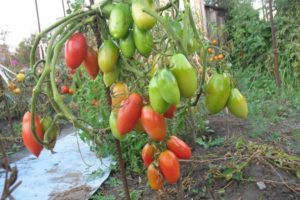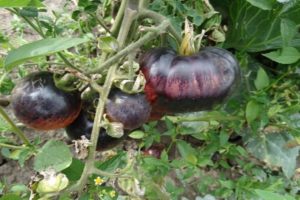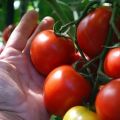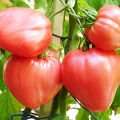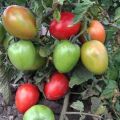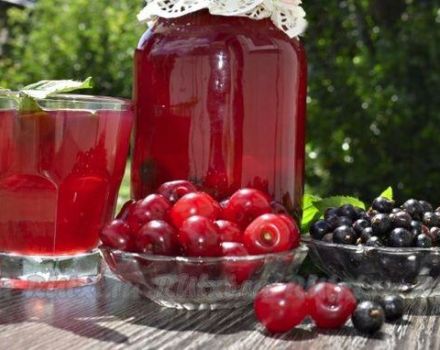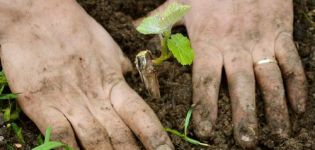Characteristics and description of the tomato variety Monastyrskaya meal, its yield
Every year, breeders all over the world are breeding more and more different hybrids of nightshade crops. Tomato Monastic Meal is perfect for those gardeners who prefer to grow yellow tomatoes in their summer cottages.
Description of tomato variety Monastic Meal
In order not to miscalculate with the choice of a variety for your site, you first need to study the description of the tomato. It is important to pay attention to such characteristics as the ripening period of the fruits, the purpose of their use and taste characteristics.
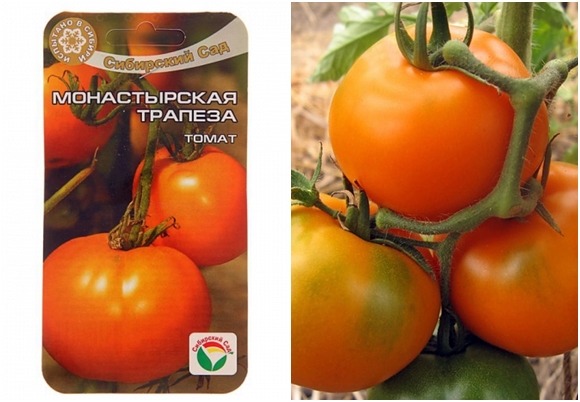
You also need to take into account the region of residence. If you can grow any varieties in the south, then in the northern latitudes, many tomatoes will have to be planted only in greenhouses or greenhouses.
The Monastyrskaya Trapeza variety was bred in 2011 by breeders from Siberia.
The Monastic Meal tomato was included in the State Register. Especially this variety will appeal to those people who suffer from various gastrointestinal diseases. Due to the high content of sugar and dry matter in the fruit, the use of fresh tomatoes "softer" affects the digestive system.
Tomato variety Monastic Trapeza belongs to the middle early. The first ripe fruits can be harvested 110-125 days after the first sprouts of seedlings appear.
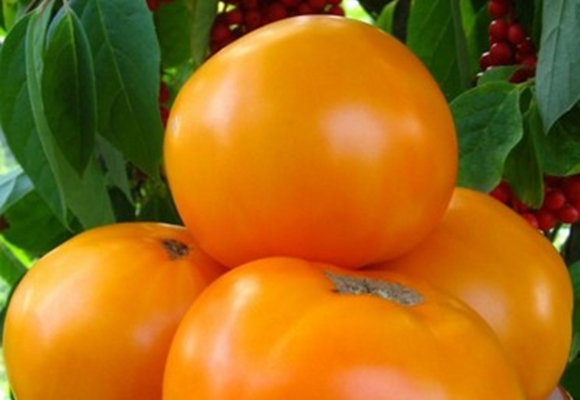
Bushes are determinate, with limited growth. In the open field, the main stem reaches a height of up to 1.5 meters. In greenhouse conditions, a tomato can grow a little more than 1 meter. A garter and pinning are also required. The plant is not a standard plant.
The main disadvantage of the variety is that it has no immunity to diseases of nightshade crops, as well as to pests and parasites.
Characteristics of tomato fruits
When studying the description of the variety, special attention must be paid to the characteristics of the tomatoes.
6 - 9 brushes with tomatoes are formed on one plant. Fruits are round, very large, slightly flattened on the sides. On average, the mass of tomatoes is from 180 to 250 grams, under ideal growing conditions, the maximum weight can reach up to 400 grams. The skin and pulp are orange. The skin is dense, smooth. The pulp is juicy and sweet, without sourness. There are 6 - 8 chambers inside the fruit with a small amount of seeds. The core is soft.
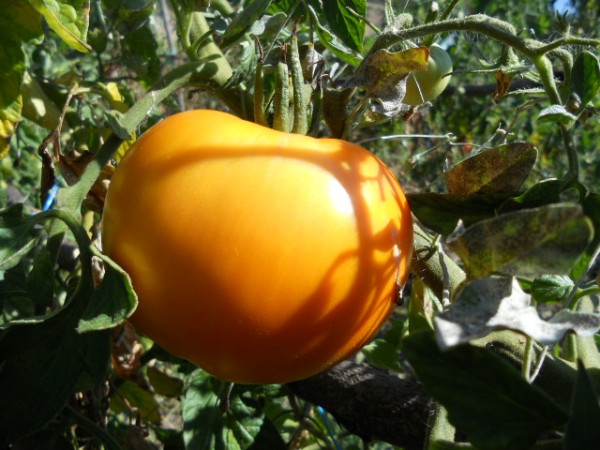
The productivity of the plant is high. The dry matter content of ripe fruits is about 60%. Perfect for diet food.
Fruits can crack if plants are watered too often. The main characteristic of this variety, which distinguishes it from other tomatoes, is the shade of ripe fruit.Ripe tomatoes have a rich orange color and are very similar to oranges.
The Monastic Meal is not suitable for long-term storage. Fresh vegetables in the refrigerator can be stored for no more than 40 days, provided that they lie in one layer. Long-term transportations are tolerated relatively well.
Due to the fact that ripe vegetables are very sweet, tomato is perfect for fresh consumption and for preparing fresh salads. You can also cook delicious lecho, ketchup and sauces from them. The only negative is that vegetables cannot be canned whole. The peel cracks, and the tomatoes themselves fall into small pieces.
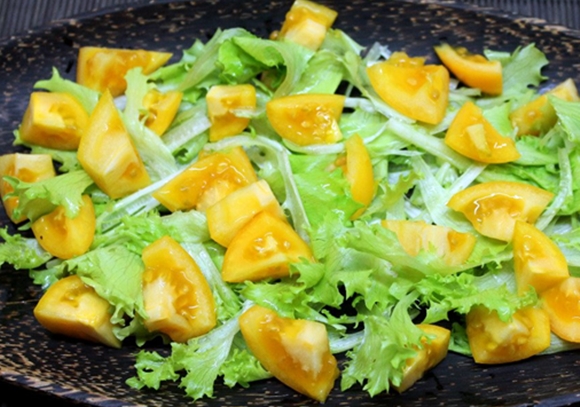
Advantages and disadvantages of the Monastyrskaya Trapeza variety
The reviews of those gardeners and gardeners who grew Monastyrskaya Trapeza tomatoes on their backyard are mostly positive. The variety was especially loved for the excellent taste of ripe tomatoes.
But, like any kind, the Monastic Meal has its advantages and disadvantages.
Benefits:
- Bountiful harvest throughout the growing season;
- Suitable for people suffering from various diseases of the gastrointestinal tract;
- Ripe tomatoes are delicious and sweet;
- Bushes are limited in growth;
- Large-fruited;
- Plants are not demanding for a lot of sunlight and heat;
- You can collect seeds from parent plants for further cultivation.
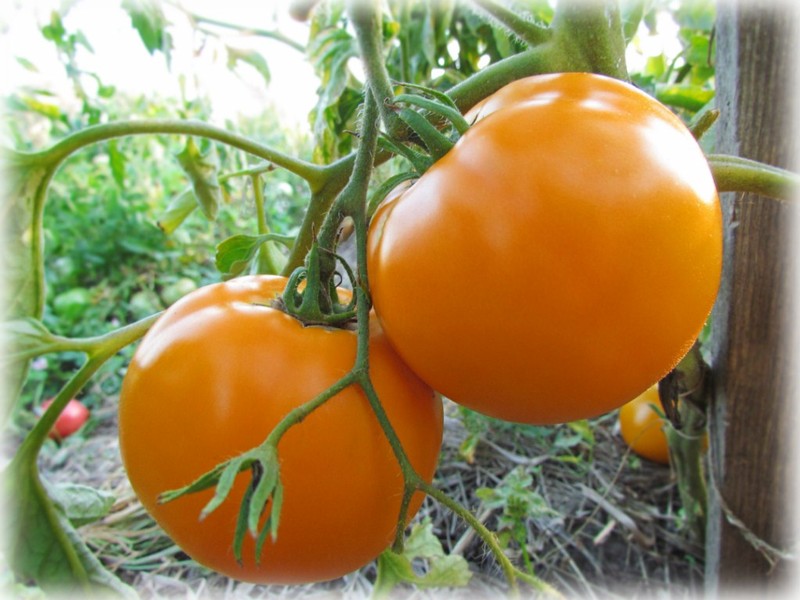
Disadvantages:
- Tomatoes crack at high humidity;
- Bushes must be tied up and pinned;
- The collected fruits cannot be stored for a long time;
- Under improper growing conditions, plants can be subject to various diseases.
Features of growing seedlings
It is advisable to grow this tomato variety using seedlings. The germination rate of planting material with this method will be much higher than with seed.
It is advisable to sow seeds 50-60 days before planting seedlings in open ground or in a greenhouse. For 1 sq. m. it is recommended to plant no more than 4 plants in order to get as much yield as possible.
As the bushes grow, it is necessary to tie up, and also remove the lower stepsons. It is desirable to form a plant in two main stems.
Particular attention should be paid to the cultivation of seedlings.
Growing seedlings:
- The first step is to prepare the land for sowing seeds. You can buy a special mixture for growing vegetable seedlings. Mix it with the soil from your site. Before this, the earth must be warmed up to +15 degrees and poured with a solution of potassium permanganate.
- Pour drainage at the bottom of the containers (you can take eggshells, fine gravel or expanded clay);
- Make grooves in the soil to a depth of 2 - 3 cm and plant seeds, pour abundantly with water at room temperature;
- Cover the boxes with seeds with glass and put them in a warm room;
- The glass should be removed regularly, the soil should be ventilated and the seeds should be watered;
- When the seeds sprout, the glass must be removed, and the containers themselves must be placed on the south windows;
- After the appearance of a pair of cotyledons and a pair of full-fledged leaves, the seedlings dive.
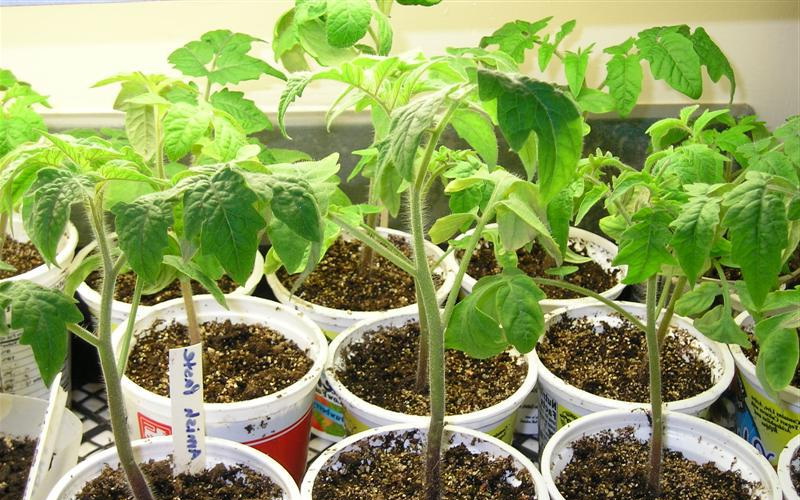
Seedlings are planted in a permanent place at the end of May. Before planting, it is important to make sure that the threat of night frosts has passed and that the temperature is above zero.
Before planting seedlings in the soil, you need to add manure or chicken droppings. Make deep holes and place the seedlings there. The distance between the holes should be at least 50 cm. If the bushes are too elongated, then they can be buried. Then the bushes should be watered abundantly.
How to increase the yield of tomato Monastic Meal
Despite the fact that Monastic Meal tomatoes give a bountiful harvest, creating ideal growing conditions for the plant, it can be increased.
During flowering, the bushes can be sprayed with a weak solution of boric acid. To do this, 15 grams of boric acid must be diluted in 10 liters of water.Plants need to be sprayed no more than 2 times per season.

A strong root system of tomatoes is also important for a good harvest. To "strengthen" it, you can huddle bushes. Before hilling, it is necessary to inspect the lower part of the stem. If there are small "pimples" on it, you can start hilling. This should only be done with damp ground. The second hilling is carried out when the base of the stem has changed from green to bluish.
In the fall, you can collect the green tops of tomatoes, chop it and mix it with the ground in the area where tomato seedlings are planned to be grown in spring. This will almost double the yield.
Another effective way is to remove excess haulm. So all the nutrients will go to the formation of ovaries and fruits, and not deciduous mass.
